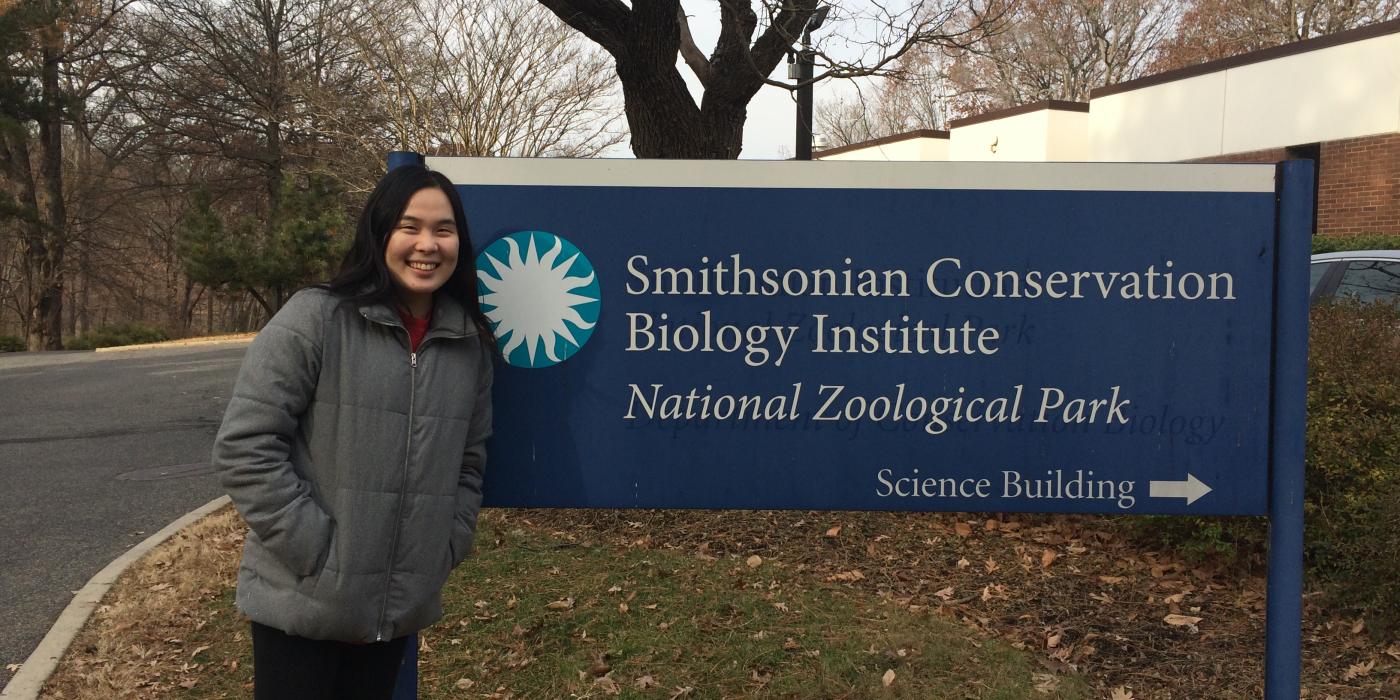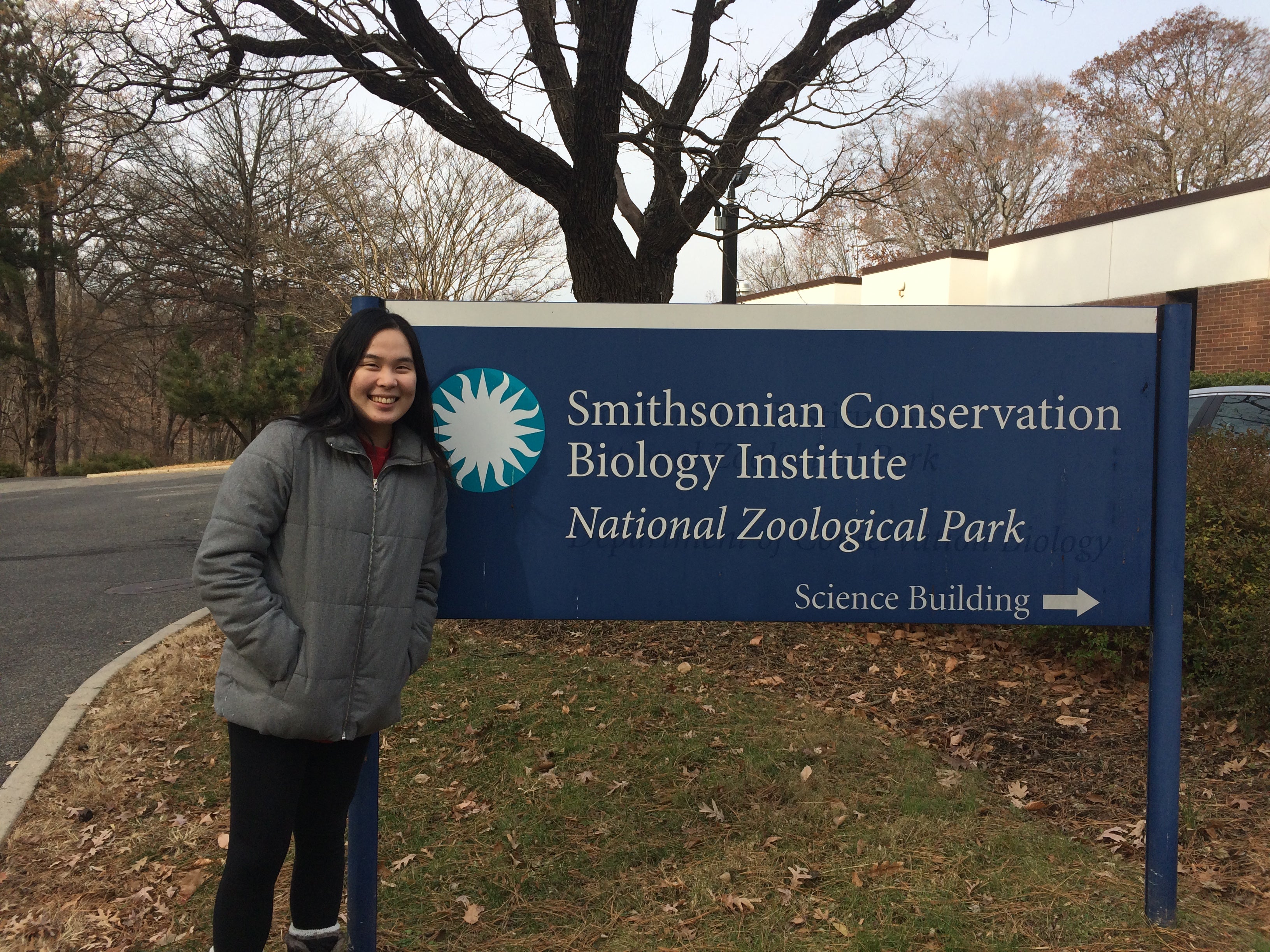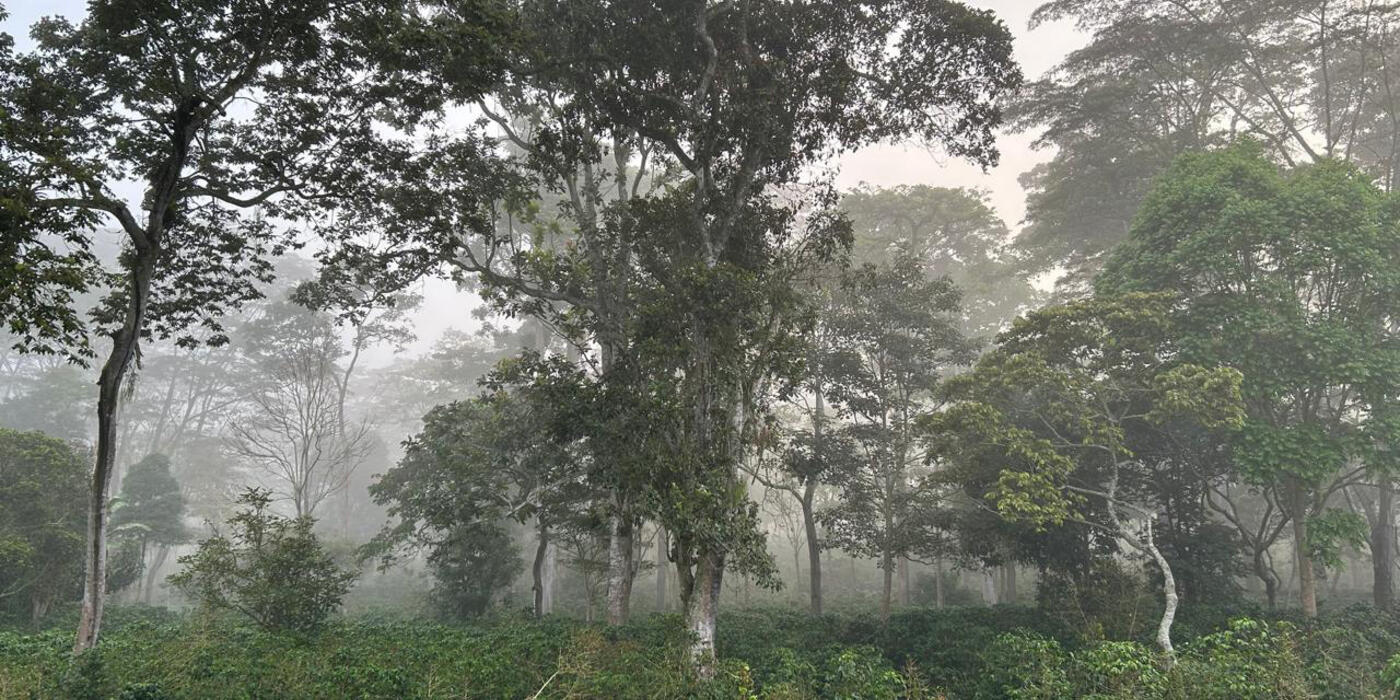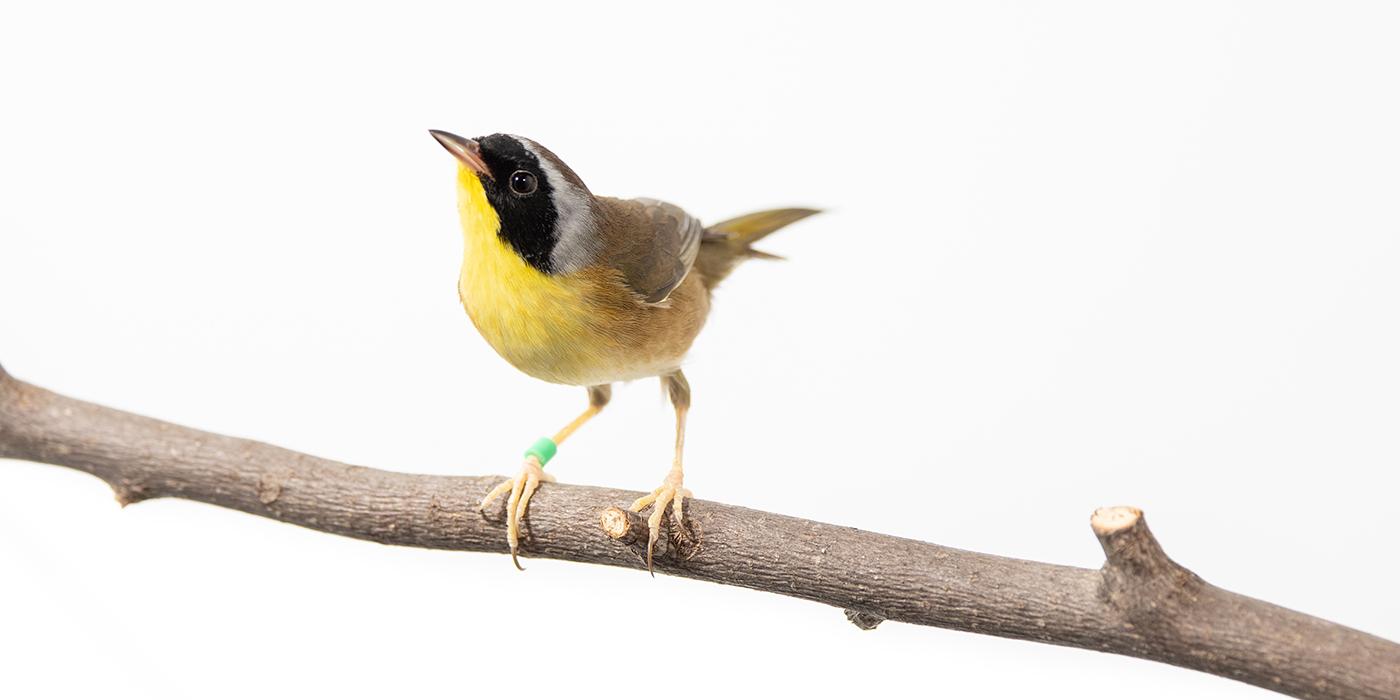A Semester at the Smithsonian Migratory Bird Center: An Intern’s Experience

What connection do birds have to global health? That’s the question I asked myself after being assigned to an internship with the Smithsonian Migratory Bird Center. As an undergraduate student majoring in health science, I hope to go into a career in global health. Having had no experience with animals, much less with birds, I was uncertain how I could contribute to SMBC.

However, as I studied bird migration with SMBC research ecologist Emily Cohen and participated in weekly bird banding, I soon discovered the important role that birds play internationally — including their connection to global health.
Our actions affect not only birds, but also our human neighbors. As birds migrate from one end of the country to the other, or from one continent to another, they pass over cities and “stopover” to rest and recover in habitats along the way.
I learned how scientists utilize various technologies, such as weather radars, to predict where birds stopover and to help preserve bird-friendly habitats. In addition to their contribution to weather forecasts, weather radars can provide information about bird movement across the aerospace.
Using the information from weather radars, I helped to map where birds lift-off from stopover habitat around the Great Lakes during spring and fall. These analyses are used to predict when birds migrate and what areas they pass through. Around the Great Lakes, many areas are under pressure for wind-farm development, so information about migratory birds’ distribution can help reduce their exposure to turbines in the future.
At SMBC, I also learned about some of the ways humans can protect birds — even starting with something as simple as the foods we choose to eat. Researchers at SMBC are working to understand if producing food, and particularly coffee, can be done in a bird-friendly way.
Bird Friendly Coffee® is a certification for an organic method of growing coffee under the shade cover of native trees, which is good for wildlife. Unfortunately, a lot of coffee is currently grown under the sun and does not provide suitable habitat. The Smithsonian’s Bird Friendly Coffee program is growing, and as an avid coffee drinker myself, I realized the impact of each cup I drink (Find out where you can buy Bird Friendly Coffee).
Birds are only one of the many ways in which nature connects us. The wood thrush spending its summer in a D.C. neighborhood ends up in the backyard of a family in Mexico during the winter. As they migrate from one continent to another, birds carry passengers that can impact our neighbors, including plant seeds, diseases and parasites.
Before this internship, birds were just another wild creature in my backyard. Despite the painful bites from the red cardinal and the endless drilling of the downy woodpecker, I have developed a personal connection with these animals. After banding my first bird, a tiny house sparrow, I am constantly on the lookout, hoping to catch a glimpse of “my” bird.
A semester with the Smithsonian Migratory Bird Center increased my appreciation for birds, shed light on the impact they have internationally and broadened my perspective on global health work.


